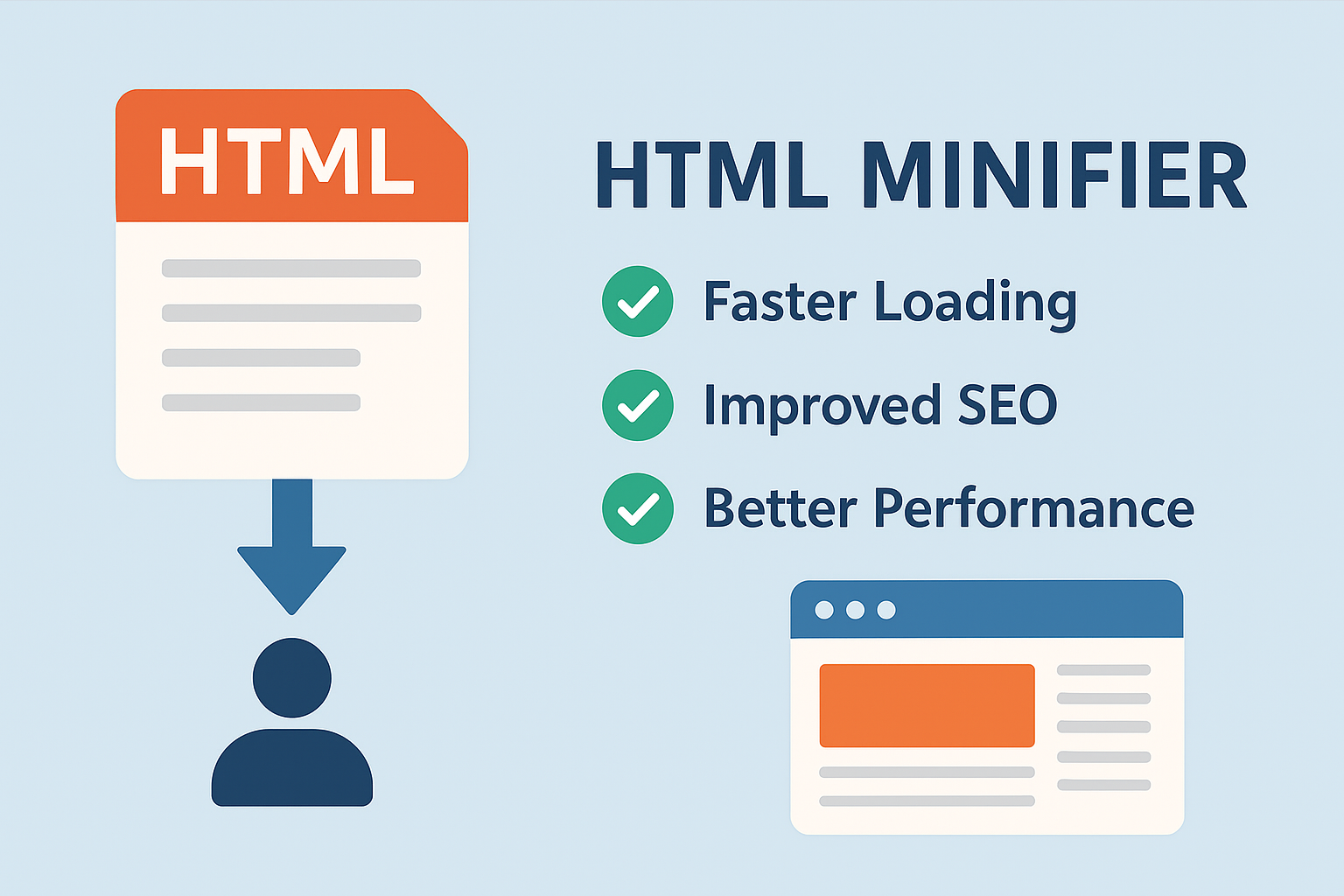
HTML minifier
Created on 5 October, 2025 • Developer Tools • 11 views • 2 minutes read
"Optimize your website speed with an HTML Minifier. Learn how minifying HTML improves performance, SEO rankings, and mobile user experience."
HTML Minifier: Boost Website Speed and PerformanceWhat is an HTML Minifier?
An HTML Minifier is a tool that helps reduce the size of your HTML files by removing all unnecessary characters. These include extra spaces, line breaks, comments, and redundant tags. While these elements make code easier for developers to read, they are not required for browsers to display a webpage correctly. By eliminating them, an HTML minifier ensures your website loads faster and performs more efficiently.
Website speed has a direct impact on user experience and search engine rankings. Studies show that users often leave a site if it takes more than a few seconds to load. Search engines like Google also prioritize fast-loading websites. That’s why minifying HTML is considered an essential optimization technique for modern web development.
How Does an HTML Minifier Work?
An HTML minifier scans your code and removes unnecessary parts without changing how the webpage looks or functions. It compresses the file by deleting spaces, new lines, and comments that are invisible to users. Some advanced minifiers also optimize inline JavaScript and CSS inside the HTML.
The result is a cleaner, smaller file that loads more quickly in web browsers. This optimization is especially beneficial for websites with high traffic or those accessed frequently on mobile devices with slower internet connections.
Benefits of Using an HTML Minifier
1. Faster Loading Times
Reducing file size makes your website load significantly faster. Speed is crucial for keeping users engaged and lowering bounce rates.
2. Improved SEO Rankings
Search engines use page loading speed as an important ranking factor. A fast, optimized site has a better chance of appearing higher in search results.
3. Lower Bandwidth Usage
Smaller HTML files reduce the amount of data transferred between the server and the user’s browser. This helps save bandwidth and reduces hosting costs, especially for websites with large audiences.
4. Enhanced Mobile Performance
Mobile users often face slower network speeds compared to desktop users. Minification ensures that web pages load quickly on smartphones and tablets, improving mobile browsing experiences.
5. Professional Optimization
Even though minified code is not visible to end-users, it reflects a professional approach to website development. It shows attention to detail and commitment to performance.
Popular HTML Minifier Tools
There are many tools available to minify HTML, both online and as part of development workflows. Some popular options include:
Online HTML Minifiers for quick, one-time use.
Advanced tools like HTMLMinifier with customizable options.
Build systems such as Gulp, Webpack, or Grunt that automate minification during deployment.
When Should You Use an HTML Minifier?
HTML minification should be applied when your website is ready for production. During development, it is better to keep the code readable with proper formatting and comments for easy collaboration. Once the project is complete and prepared for launch, minifying the HTML ensures maximum performance.
Conclusion
An HTML Minifier is a simple yet powerful tool that optimizes web pages for speed, performance, and SEO. By removing unnecessary characters from HTML files, you can deliver faster-loading websites that provide a better user experience and achieve higher search rankings. Whether you run a personal blog, business website, or large e-commerce store, HTML minification is a best practice that ensures efficiency and professionalism.
Popular posts
-
Barcode readerMisc Tools • 23 views
-
Color pickerMisc Tools • 21 views
-
SHA-256 generatorGenerator tools • 17 views
-
Exif readerMisc Tools • 17 views
-
Ip LookupChecker Tools • 16 views